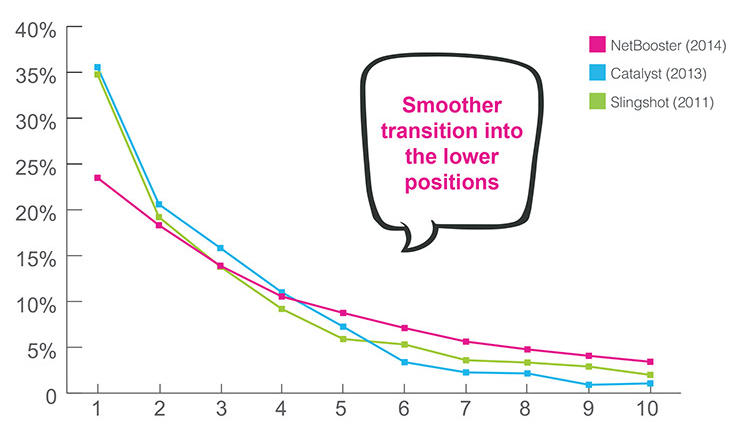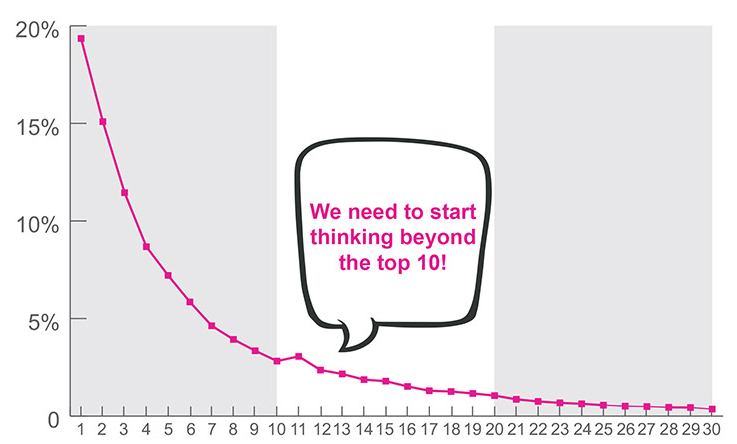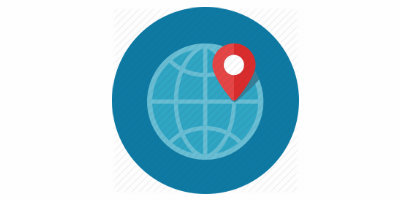There’s nothing more annoying than getting hammered with spammy emails from people (often in India) promising first page rankings. Ok, well I can think of a few more annoying things, but from an email spam perspective those are near the top. Problem is, as I stated in my 2015 predictions, I don’t think these spammers will go away any time soon. But I don’t want to focus on these spammers, or their competency, in this article. I’ve already done that in the past. Instead, I want to focus on their promise itself: first page rankings.
Should I focus on first page rankings for my keywords? Your instincts will tell you “yes of course,” but recent data has shown that there’s value to being on page two, and even page three! In fact, there may even be more value being on the top of page two than the bottom of page one!
A recent article from Moz highlights click-through rates for various search positions. Unlike in years past, where you could see fairly sharp drop-offs after position #1, as well as the top 3, 2014 data is showing a much smoother transition to the lower ranks of page one.
If we broaden this data from Moz to examine click-through rates beyond the first page of results we’ll see even more staggering data. That’s right, the position at the top of page two is getting more clicks than the bottom position on page one!
It’s worth noting that this NetBooster study consisted of 54 unique brands, over 311 million impressions, and over 65 million clicks. These numbers appear high at first glance, but it’s a small sample size of the total number of searches done in 2014. That said, the sample size is large enough to provide value.
Two additional variables to consider are: the rise in mobile device usage (and searches) and the size of your brand. Mobile searches, which Google predicts will surpass 50% of all searches in 2014, showed very similar click-through rates to desktop searches. Despite having a smaller screen size, searchers have no problem scrolling below the fold and even on to page two.
I did some research on my own to try and confirm these findings. After examining one of my larger clients I found that they had a click-through rate of 5.15% for pages ranking on page two. This is even higher than the page two click-through rates found in the NetBooster study. You can test this yourself in Google Analytics under Acquisition > Search Engine Optimization > Queries and then filtering the results based on ‘average position’. You’ll have to have Webmaster Tools enabled, and you’ll only get data for the last three months, but it’s still very valuable information.
What’s responsible for this shift in click-through rates? One possible explanation for this movement in 2014 is that consumers are becoming more savvy with their searches. They’re willing to look beyond the top results (which are often ads) to find more relevant information. It may also signify an unhappiness in Google’s search results, but that’s speculative.
So how should this influence my SEO tactics moving forward? For starters, stop obsessing with being on page one or in the top three. Instead, think about developing quality content that touches on long-tail keywords. Also, as I’ve mentioned in previous articles, avoid over-optimization. Specifically, don’t keyword-stuff your title tags and meta descriptions. Write catchy, useful titles and meta descriptions because these are more likely to generate clicks.
To learn more about SEO check out our category of articles here. If you need help with your practice’s marketing in 2015 then leave TRBO a message here or give us a call at 877-673-7096 x2.







